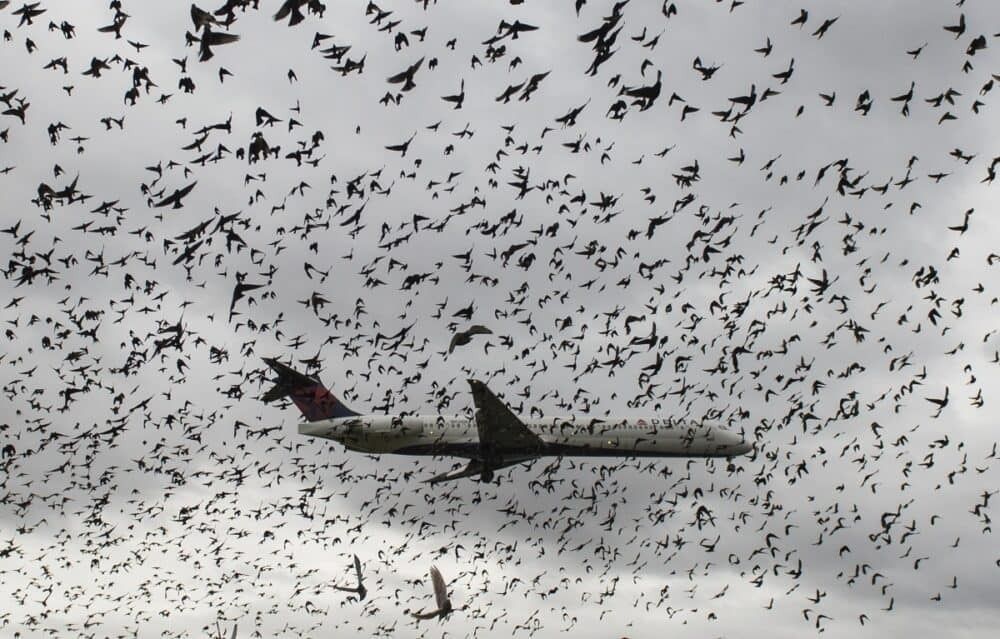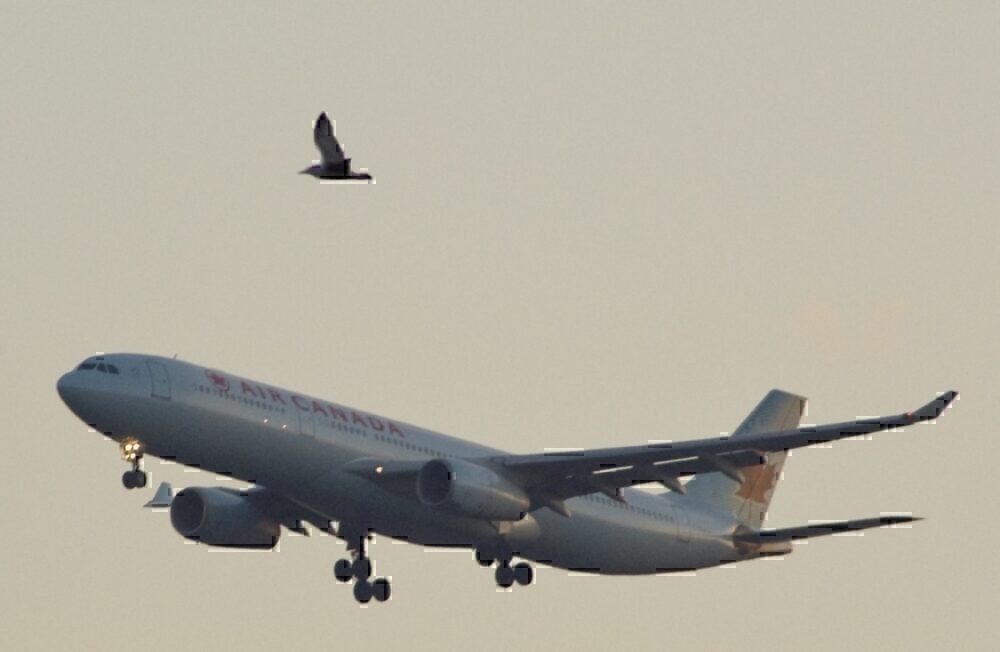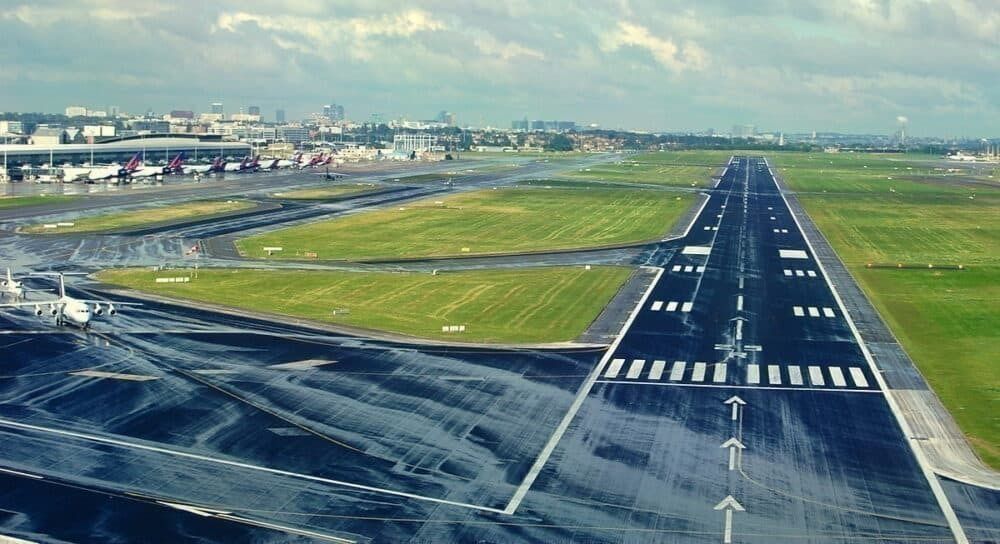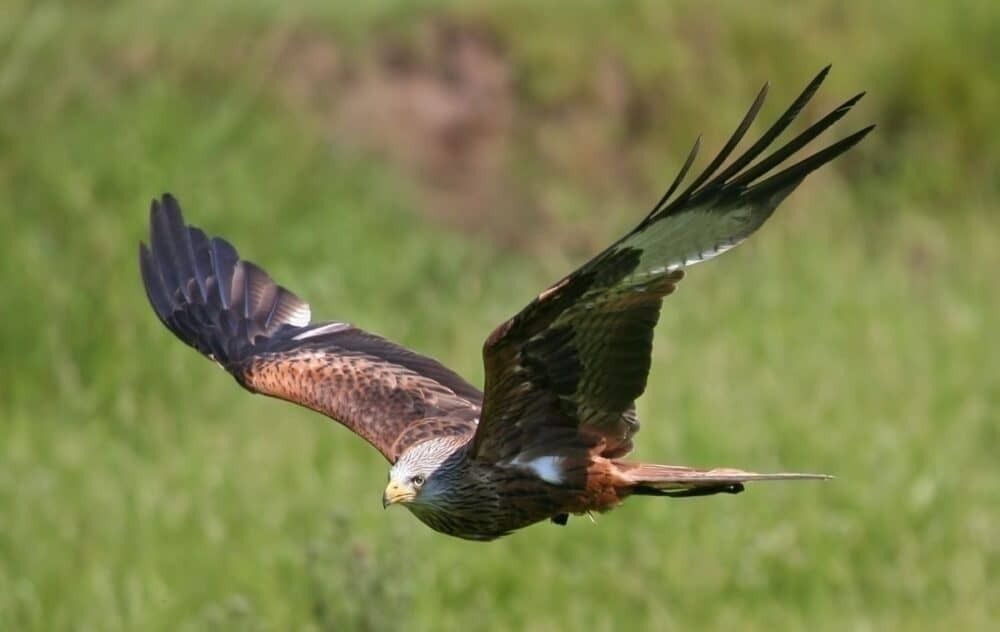How Does The Bird's Eye View Camera Work
Bird strikes are quite often an unavoidable consequence of human activity effectually areas that are pop with wildlife. Whilst bird strikes are not all that mutual, they do happen and tin accept dangerous consequences. Every bit a result, many airports around the world must factor wildlife management programs into their operations. Here'due south how they piece of work...

Why do bird strikes happen at airports?
In the eight-year period between 2008 and 2015, the International Civil Aviation Authorisation (ICAO) recorded a full of 97,751 reported global bird strikes. During that menses, the organization saw this figure more than than double in comparison to the catamenia between 2001 and 2007.
The majority of these reports came from the Europe and Northward Atlantic regions equally well every bit from Northward America. Over half of these occurrences happened during the day (68%) whilst the nearly mutual points at which they happened were:
- During the arroyo (33% of cases)
- During take-off (31% of cases)
- Upon landing (26% of cases).
Needless to say, in order to ensure the highest levels safety for aircraft, coiffure and passengers airports need to work with wildlife management to control the frequency of birdstrikes.

Ultimately, these unfortunate wild fauna collisions happen due to inter-speciated disparities. Birds seek to make their homes and feed in areas that humans accept designed for aviation. When it comes to solving this conflict, there is no one fix-all solution. However, there are a number of proven techniques that airports employ in their wildlife direction programs.
Prevention through habitat direction
The first, and probably most preferable, method of managing bird strike is reducing the attractiveness of airport spaces for nesting or hungry birds. Due to the areas of undisturbed grassland and the benefit of airports being near h2o for noise pollution reasons, airports can literally be breeding grounds for birds. The weather condition are attractive and the lack of predators also provides a condom haven for these animals. If they safely manage to cantankerous the airport, of course.
At London Heathrow, officials have and continue to invest in inquiry in order to decide exactly what kinds of birds are native to the expanse and how they reply to different deterrents. Heathrow primarily uses a specific technique of habitat management. Information technology keeps the grass in the airfield betwixt 6-8 inches in order to forestall birds from sheltering there. It says:
"With reduced visibility, [the birds] feel vulnerable to predators and find it difficult to feed on insects because admission to the soil is impeded by the long grass. It should also be noted that Heathrow helps manage over 170 hectares of biodiversity areas around the airport, ensuring the habitats for over 2,000 species of flora and fauna are maintained."
If that doesn't work, the airport as well uses speakers to project distress calls around Heathrow in society to prevent birds from thinking it's a safe identify to land.

Other methods of managing habitats to preclude birds from crossing airports are:
- Covering open water to preclude birds from landing there
- Using chemicals to manage insect populations to diminish food sources
- Working with wild fauna government to encourage birds to nest away from airports.
Prevention through population management
Another method of mitigating the risk of bird strikes is slightly more ruthless. Unfortunately, whilst prevention methods have the best intentions, they are unable to prevent 100% of birdstrike cases. The potential risks posed by these bird strikes are and so great that it has forced airports to await at other ways of managing their bird populations.
Whilst JFK International Aerodrome in New York uses the aforementioned habitat techniques first, it also captures birds using various methods, killing them if necessary. The reason for this is to create an firsthand removal of danger for aircraft.

In an environmental impact statement from 2012, JFK Airport states:
"Nonlethal and lethal wildlife command measures include frightening devices, nest and egg destruction, shooting, and capture and euthanasia. [These methods have] been augmented by the supplemental on-aerodrome shooting plan and, until 2011, work by a falconry company. In the supplemental on-airport shooting program, 2-v trained specialists stationed along the southern perimeter of the airport utilise shotguns with non-toxic shot to shoot gulls attempting to fly over the airport...From 1996-2010, a contractor flew falcons and other raptors and using pyrotechnics to scare birds abroad from the Shipping Operations Area during three months in the summertime when bird strike risks are greatest."
Even so, despite these methods of prevention, bird strikes nevertheless keep to occur. Of course, it is impossible for airports to completely eradicate their risk from bird strikes. Simply, should more be done and is this the correct approach?
What do you call up? Do you lot agree with the techniques described higher up? Have your say in the comments.
Well-nigh The Writer
Source: https://simpleflying.com/airports-prevent-bird-strikes/
Posted by: hennesseybecomeavoing.blogspot.com


0 Response to "How Does The Bird's Eye View Camera Work"
Post a Comment